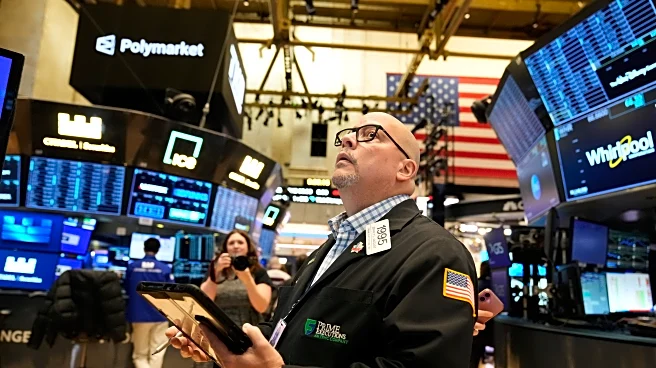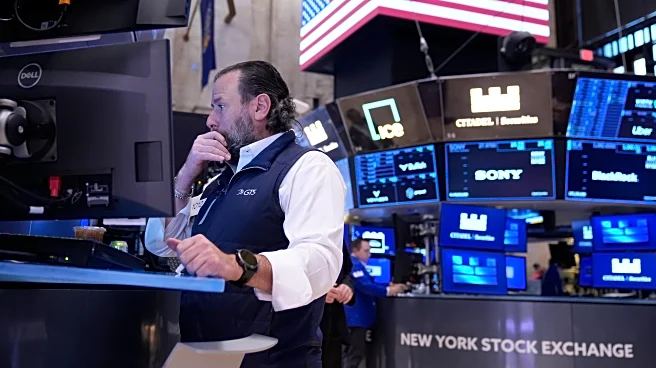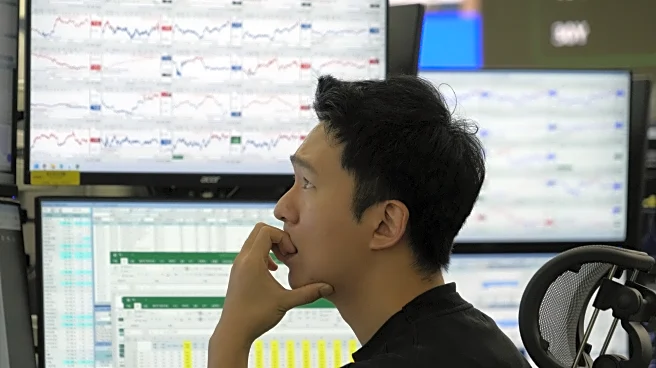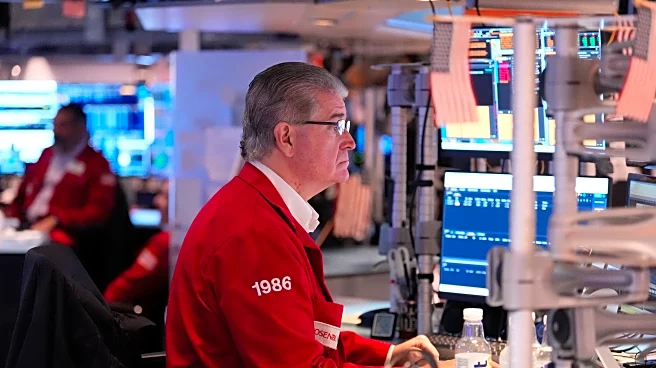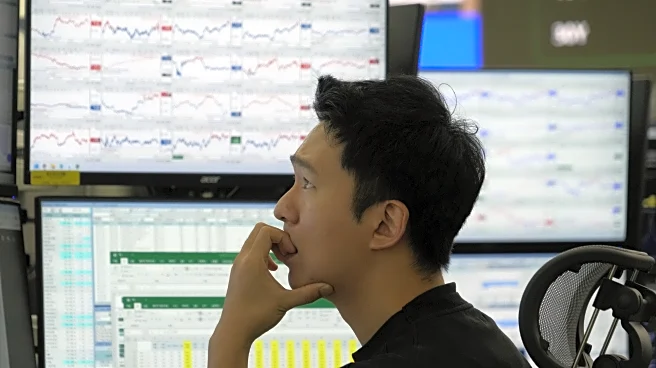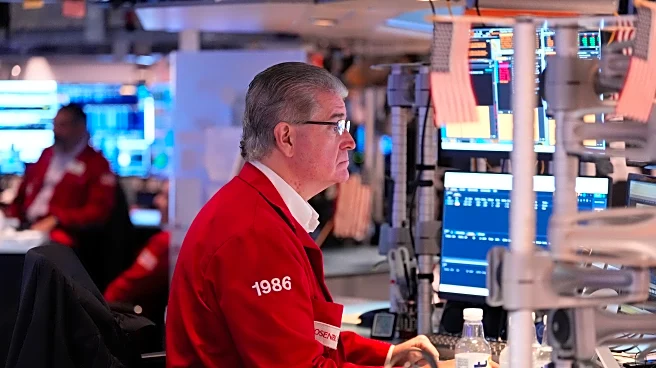What's Happening?
On November 14, 2025, major U.S. stock indexes experienced a decline, primarily driven by concerns over technology stocks and the Federal Reserve's stance on interest rates. The Nasdaq is facing its longest losing streak since April, attributed to apprehensions
about inflated AI stock valuations. The Dow Jones Industrial Average fell by approximately 0.6% during morning trading in New York, while the FTSE 100 saw a decline of over 1%. The CME Group's FedWatch tool indicated a drop in expectations for a 25-point rate cut in December, from 67% last week to 53%, following Federal Reserve officials' reluctance to ease monetary policy further.
Why It's Important?
The current market downturn highlights investor anxiety regarding the Federal Reserve's monetary policy and its implications for economic growth. A potential delay in interest rate cuts could negatively impact market sentiment, particularly in the technology sector, which has been a significant driver of stock market gains. The uncertainty surrounding the Fed's decision may lead to increased volatility, affecting investment strategies and portfolio diversification. Stakeholders in the U.S. economy, including businesses and investors, are closely monitoring these developments as they could influence future economic stability and growth prospects.
What's Next?
Market participants are awaiting further signals from the Federal Reserve regarding its monetary policy decisions. The lack of a rate cut in December could lead to continued market volatility, prompting investors to reassess their positions in technology stocks and diversify their portfolios. Additionally, the ongoing government shutdown may have a sustained impact on economic data, influencing the Fed's future actions. Investors and analysts will be watching for any indications of a shift in the Fed's approach to interest rates, which could provide clarity and potentially stabilize market conditions.
Beyond the Headlines
The broader implications of the Federal Reserve's stance extend beyond immediate market reactions. The reluctance to cut rates may reflect deeper concerns about the U.S. economic outlook, including labor market trends and geopolitical uncertainties. This situation underscores the importance of diversified investment strategies and the need for stakeholders to adapt to changing economic conditions. The evolving landscape may also prompt discussions on the long-term sustainability of technology stock valuations and the role of monetary policy in supporting economic growth.


